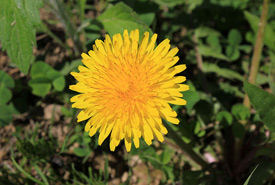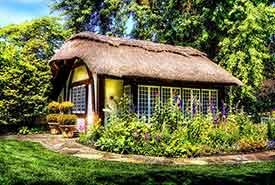No Mow May is over, now what?

Dandelion (Photo by Yinan Chen, Wikimedia Commons)
The Nature Conservancy of Canada (NCC) encouraged people across Canada to leave their lawns alone during May. Or if that was too much, people were encouraged to at least delay the inevitable mow for a few weeks. Where I live, this is relatively normal, with many of my neighbours opting to mow their lawns only when the dandelions turn from yellow to white. This idea of a No Mow May came from a campaign that originated in the UK, which encouraged longer lawn growth in order to support native pollinators and other insects.
However, this begs the question: now that No Mow May is over, what comes next? I spoke with NCC’s senior conservation biologist, Dan Kraus, who explains that the end of May does not need to be the end of your efforts to promote backyard biodiversity.

Flower meadow (Photo by Albrecht Fietz)
He says that adding biodiversity to your lawn and garden can continue throughout the year. “I see lots of places where it’s a very traditional lawn and garden, but they’ve popped in a few milkweed plants here and there,” Dan says. “It’s easy to add a few native plants to any yard.” He notes that No Mow May created momentum for encouraging a rethink of our lawns and gardens.
“No Mow May can be a gateway to encouraging people to think about nature and the plants in our yards, in addition to growing more native plants,” he says. “Be aware that you’re not buying and planting invasive species, because some of them are not well-behaved and will escape to nearby natural areas.”

Cottage with flowers (Photo by Vincent Ciro via Pixabay)
Every region has different native plants and is at risk of different invasive species. Resources like iNaturalist allow users to easily identify both native and invasive plants in their area, which is helpful if you’re like me and can never remember which plant is what. NCC also uses iNaturalist for our annual BioBlitz, happening across Canada at the end of July.
Upwards of 80 per cent of all Canadians now live in urban areas. Dan believes that native plant gardening can help us learn about nature and connect with the natural world. This knowledge can help increase the biodiversity around the places where we live. Participating in these types of small acts of conservation, such as planting native species, can create a huge ripple effect.
“The biggest opportunity to restore nature in urban areas is within our backyards and other outdoor spaces. And that could have a big collective impact,” Dan says. “We all have an opportunity to learn about the native plants in our local area and try to emulate those ecosystems in the spaces around us.”
But you don’t have to have a backyard to support native biodiversity: people living in apartments can choose potted plants that reflect the ecosystem around them.
The end of No Mow May marks the beginning of new conversations around conservation. By allowing ourselves to reconnect with native plants, we naturally enhance habitats for local wildlife and pollinators. To learn more about how NCC supports Small Acts of Conservation, such as planting native plants, click here.


